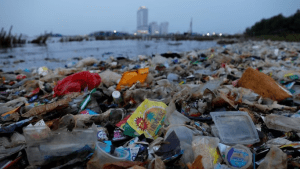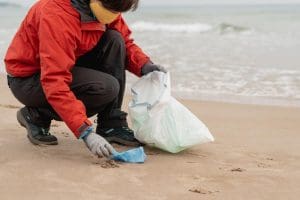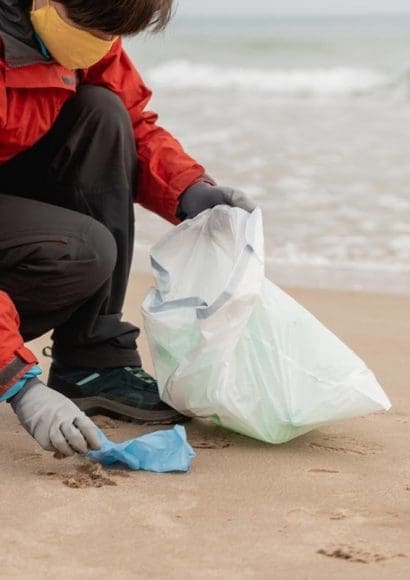
The Sargasso Sea, a mysterious and unique marine ecosystem, has fascinated scientists, sailors, and environmentalists for centuries. Known for its calm waters and iconic floating vegetation, it presents a combination of biological wonder and environmental challenge. In this article, we will delve into “The Sargasso Sea effect and its floating vegetation”, exploring its significance, role in marine ecosystems, and the pressing environmental issues surrounding it.
Contents
What Is the Sargasso Sea?🐟
The Sargasso Sea is an area of the North Atlantic Ocean defined not by land borders but by ocean currents. Encircled by the North Atlantic Gyre, its boundaries shift with the currents, making it a fluid, ever-changing expanse.
A Unique Ecosystem Defined by Floating Vegetation
The Sargasso Sea is home to large quantities of Sargassum, a type of brown algae that floats freely on the surface. Unlike most marine algae, which anchor to the ocean floor, Sargassum thrives without roots, creating floating mats that sustain vibrant marine life.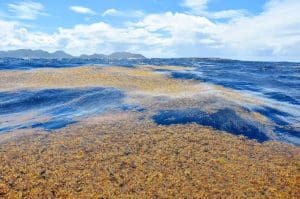
Looking for delicious ways to enjoy mackerel? Check out these 5 recipes with mackerel fish that are both easy to make and packed with flavor.
-
- Biodiversity hotspot: The floating vegetation provides shelter, breeding grounds, and food for numerous species, including fish, sea turtles, and birds.
- A nursery for young marine life: Juvenile fish, such as mahi-mahi and eels, use Sargassum mats for protection against predators.
The Sargasso Sea Effect: A Natural Phenomenon🐟
The “Sargasso Sea effect” refers to the interplay between its floating vegetation, unique ocean currents, and ecological role. This phenomenon highlights the area’s importance as a carbon sink, a biodiversity refuge, and a critical piece of global marine dynamics.
Ocean Currents and Their Role
The Sargasso Sea owes its existence to surrounding currents: the Gulf Stream, the North Atlantic Current, the Canary Current, and the North Atlantic Equatorial Current. These currents isolate the region, trapping floating debris and Sargassum.
-
- Circular flow patterns: The currents maintain the region’s calm waters, allowing Sargassum to accumulate undisturbed.
- Global impact: This isolation also traps plastics and pollutants, creating an environmental dilemma.
Floating Vegetation as a Carbon Sink
Sargassum plays a vital role in mitigating climate change by sequestering carbon. Through photosynthesis, the algae absorb significant amounts of carbon dioxide from the atmosphere, storing it within their biomass.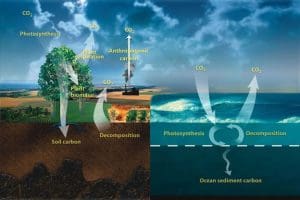
-
- Climate regulation: The algae’s ability to trap carbon makes it a natural ally in combating global warming.
- Decomposition impact: When Sargassum sinks, it transfers carbon to the ocean floor, contributing to long-term storage.
The Importance of Floating Vegetation for Marine Life🐟
Floating Sargassum is a cornerstone of the marine ecosystem. Its role goes beyond providing habitat; it sustains food chains and contributes to ocean health.
A Shelter for Life
Sargassum mats offer refuge to countless species, acting as a floating oasis in the vastness of the open ocean.
-
- Juvenile turtles find protection from predators.
- Small fish use the vegetation as camouflage.
A Source of Food
The floating vegetation directly supports marine herbivores and indirectly sustains larger predators.
-
- Herbivores: Crustaceans and small fish feed on the algae itself.
- Predators: Tuna, dolphins, and seabirds hunt the smaller species inhabiting the mats.
Environmental Challenges Surrounding the Sargasso Sea🐟
While the Sargasso Sea and its floating vegetation provide ecological benefits, they face increasing threats from human activities and climate change.
Plastic Pollution
The same currents that concentrate Sargassum also trap plastics and microplastics. These pollutants disrupt marine ecosystems and pose significant risks to wildlife.
-
- Entanglement hazards: Marine animals often get trapped in plastic waste, leading to injury or death.
- Toxic ingestion: Many species mistake plastic for food, introducing harmful chemicals into the food chain.

Excessive Sargassum Blooms
In recent years, excessive Sargassum blooms have been linked to agricultural runoff and rising sea temperatures.
-
- Coastal impacts: Blooms often wash ashore, where decaying vegetation emits foul odors and harms tourism.
- Marine imbalance: Excess Sargassum can deplete oxygen levels in the water, threatening marine species.
The Role of Conservation Efforts🐟
Protecting the Sargasso Sea requires international collaboration and innovative solutions.
Reducing Pollution
Efforts to minimize agricultural runoff and manage plastic waste are critical.
-
- Policy measures: Stricter regulations on fertilizers and industrial waste can help reduce nutrient pollution.
- Community action: Beach cleanups and recycling initiatives play a significant role in keeping plastics out of the ocean.

Pairing the right wine with seafood can elevate any meal—explore our guide on the Seafood and wine alliance to find perfect combinations for your next dish.
Promoting Scientific Research
Understanding the complex dynamics of the Sargasso Sea is vital for its preservation.
-
- Monitoring programs: Tracking Sargassum blooms and studying their causes can help mitigate negative impacts.
- Marine biodiversity studies: Researching species interactions within the ecosystem can inform conservation strategies.
Looking to the Future: Why the Sargasso Sea Matters🐟
The Sargasso Sea effect reminds us of nature’s interconnectedness and our role in preserving it. As a haven for biodiversity and a tool against climate change, it is an invaluable resource. Addressing its challenges will require global awareness and concerted action.

